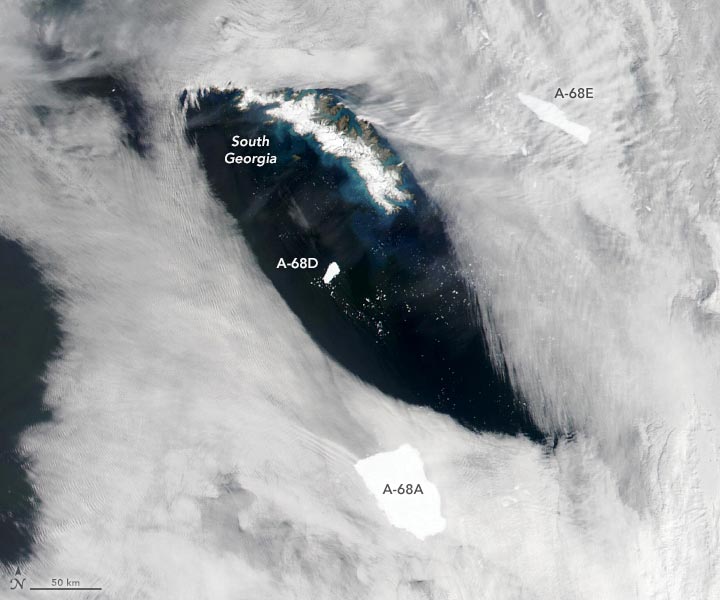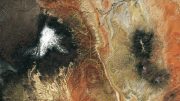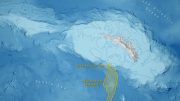
The satellite captured an image of the remnants of the massive Antarctic iceberg A-68A, along with two large pieces that had broken off in the southern Atlantic Ocean on January 11, 2020. (Click the image for high-resolution view.)
Seawater has been cutting like a knife through A-68A, the enormous Antarctic iceberg drifting in the southern Atlantic Ocean. On January 11, 2021, the Visible Infrared Imaging Radiometer Suite (VIIRS) on the NOAA-20 satellite acquired this image showing the remainder of A-68A, along with two large pieces that broke off in December 2020.
The U.S. National Ice Center (USNIC) reported on January 8 that A-68A measured 74 kilometers long and 44 kilometers wide. That equates to an area about twice the size of Houston—still sizable, but quite a bit smaller than its Delaware-sized status in July 2017 when it calved from the Larsen C Ice Shelf. The pieces that broke from A-68A in December (forming A-68D and A-68E) are smaller, but remain large enough to be tracked by the USNIC.
For more than a month, A-68A has been drifting threateningly close to South Georgia—a remote island in the southern Atlantic Ocean. So far, the berg and its offspring have avoided becoming grounded and continue to drift with the currents.
NASA Earth Observatory image by Lauren Dauphin, using VIIRS data from NASA EOSDIS LANCE, GIBS/Worldview, and the Suomi National Polar-orbiting Partnership.









Be the first to comment on "Seawater Cutting Like a Knife Through Enormous Iceberg: A-68A Being Sliced to Pieces"